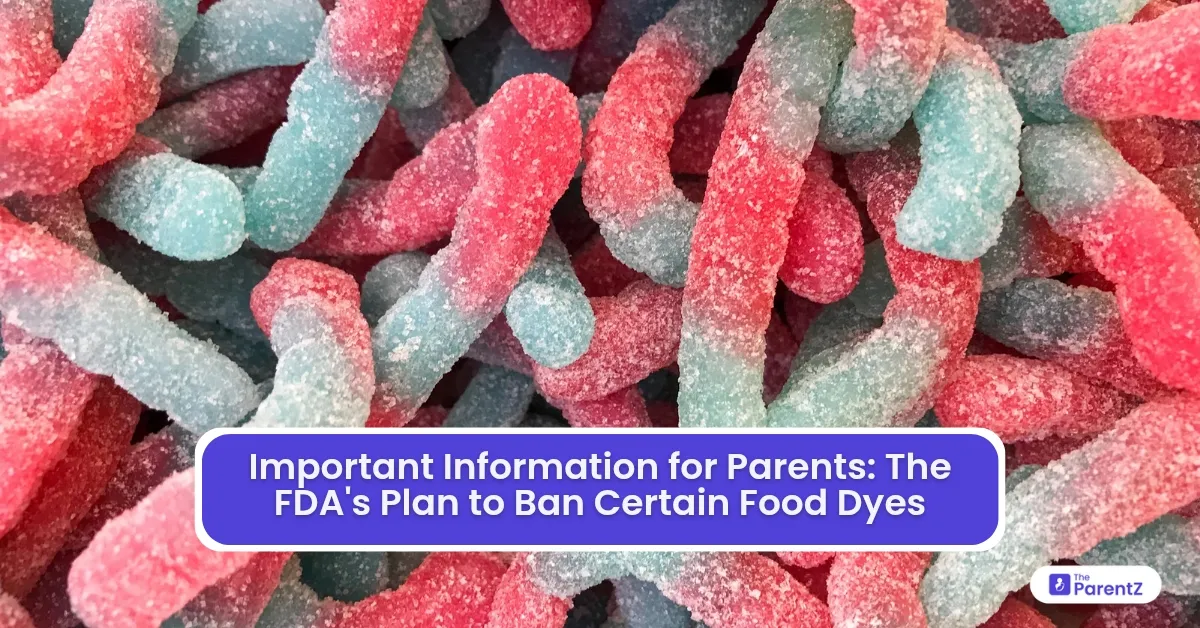The FDA (U.S. Food and Drug Administration) has recently announced plans to ban certain synthetic food dyes that are commonly found in foods marketed to children. And if you’re a parent who cares about what goes into your child’s body (and mind), this is big news you need to know.
Read below this article to find out the complete information about the FDA’s plan to ban certain food dyes that might unknowingly be harming your kids in a way you ever thought.
What’s the FDA Actually Banning?
The FDA is proposing to phase out several artificial food dyes, especially those that studies have increasingly linked to health concerns in children. These dyes include commonly used ones like:
- Red 3
- Yellow 5 (Tartrazine)
- Yellow 6
- Blue 1
- Blue 2
You’ve probably seen these listed on the back of snack packs, sodas, cereals, and even medicines. They give foods those bright, intense colors that kids find irresistible.
But the science behind them? Not as harmless as once thought.
Why Are These Food Dyes a Concern?
Over the last decade, a growing body of research has suggested that certain artificial food dyes could be linked to behavioral issues in children, including increased hyperactivity, attention problems, and allergic reactions.
In a study, it was even noted that synthetic dyes can worsen symptoms of ADHD (Attention Deficit Hyperactivity Disorder) in some children. Another study revealed that kids who consumed foods containing these dyes showed noticeable changes in attention span and behavior within just hours.
Even though food dyes have been around for years, newer, more sensitive research tools are allowing scientists to pick up on subtle but meaningful impacts that weren't visible before.
In short: just because something has been around forever doesn’t mean it’s safe forever.
What Does This Mean for Your Family?
If the FDA’s ban moves forward (and many experts believe it will), manufacturers will need to reformulate products without these dyes. Many companies are already ahead of the curve—using natural colorants like beet juice, turmeric, and spirulina instead.
However, until the ban is fully enforced, it’s smart for parents to be a little more cautious.
Start checking food labels. Look for the names of artificial dyes and consider choosing products that use natural coloring instead. Many brands are proudly labeling themselves as "dye-free" nowadays.
Effective Tips for Avoiding Artificial Dyes Now
Until the FDA officially pulls these dyes from shelves, here are some easy swaps you can make today:
- Choose naturally colored foods: Pick snacks and treats that use plant-based colorants.
- Make homemade versions: Whip up your own popsicles, cupcakes, and snacks using real fruit purees and vegetable juices.
- Educate your kids: Talk to them in a positive way about why choosing real food matters.
Conclusion
Parenting in today’s world means dodging a million invisible hurdles. Food dyes are just one more thing. As the FDA steps up to ban these dyes, you can all breathe a little easier knowing the system is slowly catching up with the science. In the meantime, small choices you make every day add up in big ways.








Be the first one to comment on this story.